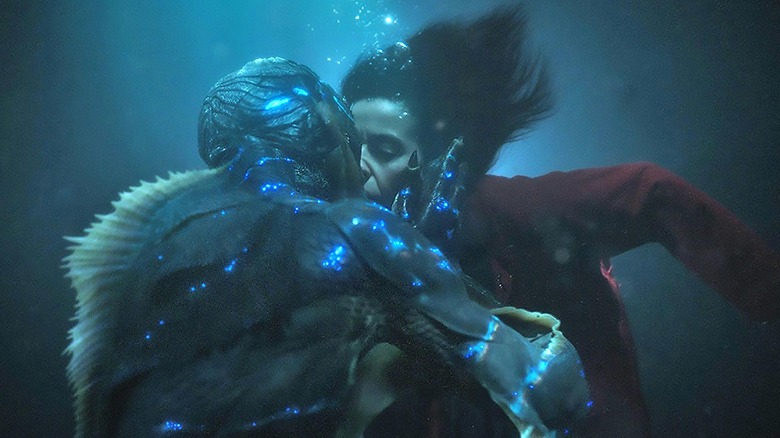
Guillermo del Toro is one of the best filmmakers working today, a storyteller -- perhaps the only contemporary storyteller -- capable of pulling the metaphorical sword from the stone. He wields a filmic Excalibur, and even his weaker films (comparatively speaking) remain some of the best genre entries ever made. He delivers on all fronts, directing, writing, and producing the sort of films virtually no one else is making. He co-wrote Peter Jackson's "The Hobbit" trilogy, produced several of the last decade's best horror movies (including the recent Scott Cooper film, "Antlers"), and is a five-time Oscar nominee with two wins under his belt. The man has a Wikipedia page just for the awards he's accumulated, for goodness sake.
Today, we'll be ranking all of Guillermo del Toro's directorial efforts. With 10 features to his name and two hotly anticipated titles on the way (including the suitably gothic-looking "Nightmare Alley" remake), moviegoing audiences are living through an era of peak del Toro. None of the titles listed here are bad by any means; indeed, each is emblematic of his inimitable cinematic touch.
But rank them, we must.
Blade II
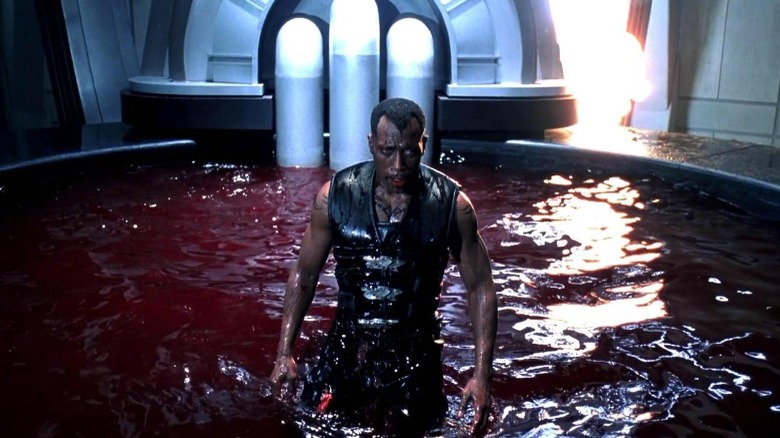
The first entry in the "Blade" franchise, directed by Stephen Norrington and starring Wesley Snipes in the titular role, followed a half-vampire who hunts down other vampires. Adapted from the Marvel Comics series of the same name, it grossed over $131 million at the worldwide box office against a modest budget and was consequently followed by a sequel.
Guillermo del Toro directed the second entry, the aptly titled "Blade II," and infused the nascent comic book property with enough identity and visual flourish to mandate a third, "Blade: Trinity." "Blade II" is very much a comic book movie, replete with dense mythology, cryptic connections, and gobs of fan service just as powerful as the movie's Reapers -- mutant monsters indiscriminate in their killing, be it humans or bloodsuckers.
All things considered, "Blade II" is something of an anomaly in the journey del Toro took to becoming the filmmaker he is today. And yet, despite being constrained by studio expectations and the parameters of the character's lore, del Toro still managed to make something that feels distinctly his own.
Hellboy
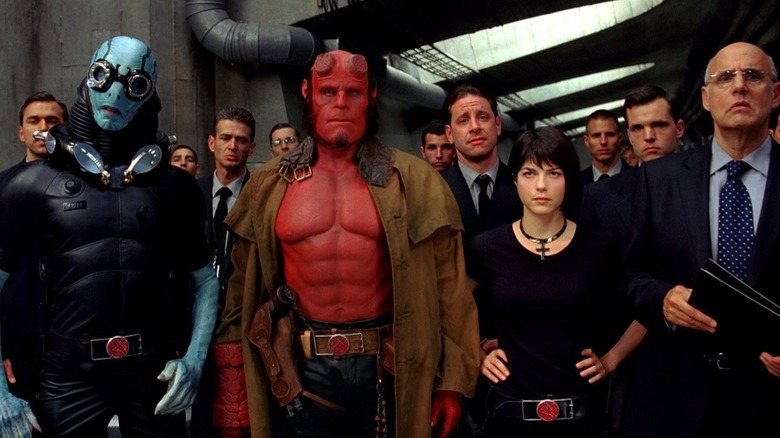
A long-gestating project, del Toro himself concedes that it was his own "Blade II" (alongside other high-profile superhero adaptations) that finally cultivated a climate where "Hellboy" could exist. Both "Hellboy" and its sequel are auteur-driven superhero films, the kind of movies that feel less like a genre exercise and more like unique properties particular to their creators (see Sam Raimi's "Spider-Man" for another example). "Hellboy" was conceived with star Ron Perlman in mind for the lead role, a superhero who works to keep the world safe from supernatural threats.
It's a gloriously strange, vibrant, and compelling superhero movie, one that rejects convention and formula for an identity all its own. It was del Toro working on a larger scale than before with a comic book property he is clearly a huge fan of, and it's that fondness that translates most. Guillermo del Toro is akin to Peter Jackson in that, more than anything, he is both a filmmaker and a fan. That passion and respect for properties -- whether his own conception or not -- elevates everything he touches. "Hellboy" is still a superhero movie (one that is also a de facto origin story), and while that won't work for everyone, it's as much a part of del Toro as he is of it.
Mimic
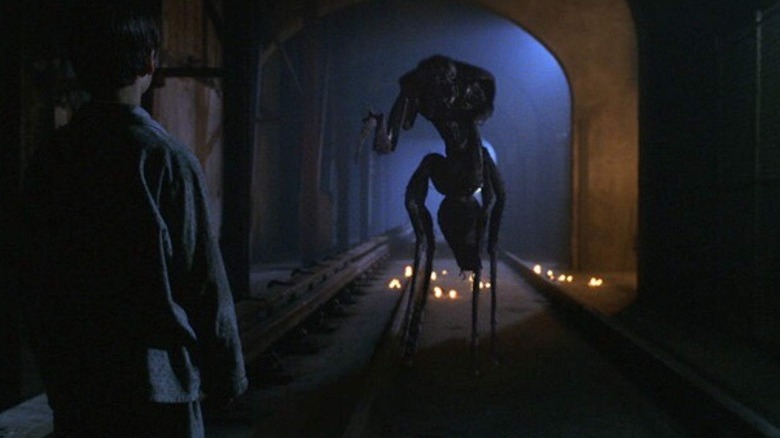
It has been long reported that producer Harvey Weinstein, frustrated that del Toro's work on "Mimic" wasn't scary enough, walked on set and berated del Toro about how to competently direct a movie. He remembers it, in an interview with The Independent, as a "horrible, horrible experience." He has since released a quasi-director's cut of the movie, a version that somewhat successfully resembles his original vision, though "Mimic" is unfortunately a victim of disparate ideologies in an increasingly hostile cinematic landscape.
What remains, even in the theatrical cut, is still a curiously campy cockroach of a movie. A rough sketch outline of "Mimic" might read as follows: after cockroaches spread a deadly disease that kills hundreds of children in Manhattan, a "Judas breed" hybrid is developed to accelerate the deaths of the city cockroaches. This breed soon develops deep under the city, though, and grow into monstrous, human-sized cockroaches with a taste for human flesh. Guillermo del Toro's trademarks are there– existential questions, grotesquely-realized monsters– but even in its final state, it feels curiously incomplete. Climatic scenes cut out midway through, and competing tones induce whiplash. Is it a monster movie? Elevated science fiction? A humanistic drama about entomologists? It's all those things, but it's also del Toro's first foray into Hollywood. It's rough, but it's an ooey-gooey omen of the pleasures to come.
Pacific Rim
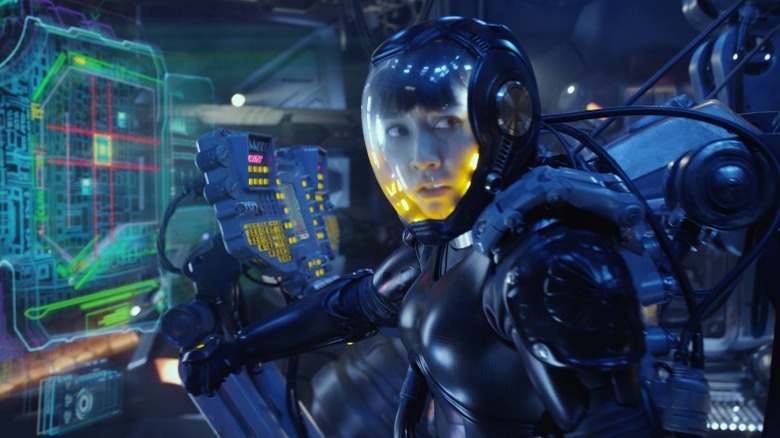
"Pacific Rim" rocks. When the world finds itself under siege from kaiju (towering sea monsters that have emerged from portals deep in the bottom of the Pacific Ocean), giant mechas are developed and sent into battle against them. In effect, it's giant robots versus giant sea monsters. It rarely, if ever, gets better than that. Unfortunately, Guillermo del Toro's "Pacific Rim" released before Warner Bros. successfully rebooted "Godzilla," reminding the world of just how much better it is with giant, city-leveling monsters. Though it grossed over $411 million worldwide, its budget was somewhere in the $190 to $200 million range. Not an outright failure, but not the smashing success that "Mechas beat up kaiju" should have been.
Charlie Hunnam stars as Raleigh Becket, a Jaeger pilot (the movie's mechas) called back into battle after a brief reprieve following his brother's death. He's paired with a rookie pilot, Mako Mori (Rinko Kikuchi), to combat an increase in kaiju as they stream into our world. Guillermo del Toro's trademark pathos is evident throughout. There's a compelling human element that 2014's "Godzilla" would less successfully execute, and the battles themselves are top-notch. It's a frenzied, furiously fun monster romp, and while it isn't del Toro's best, it is a title some viewers might be inclined to revisit the most.
Hellboy II: The Golden Army
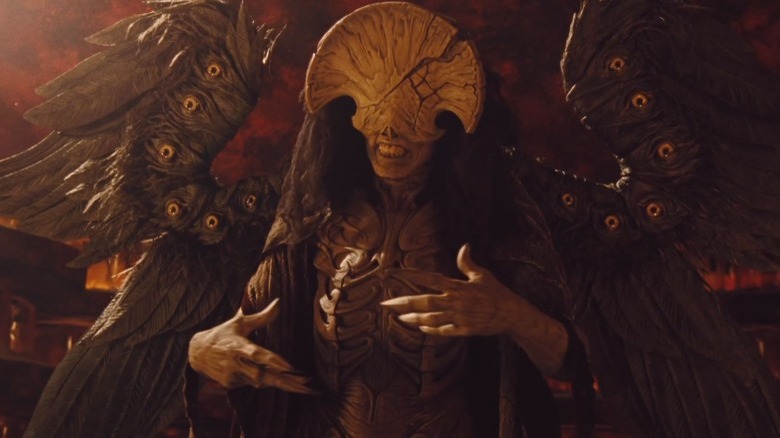
Guillermo del Toro's first "Hellboy" was not, strictly speaking, a financial success. Against a budget of $66 million, it grossed just shy of $100 million at the worldwide box office. Against all odds, a sequel was greenlit (perhaps on account of del Toro's unqualified success with "Pan's Labyrinth," making the film something of a career bridge between both "Hellboy" entries). With some Oscar clout under his belt, del Toro was ready to revisit his favorite superhero.
The sequel is considerably more emotive and vibrant than the original, a film that was already overflowing with its own unique identity. Perlman's Hellboy was back, this time facing flying tooth fairies and an ancient golden army, a group of mechanical soldiers allegedly gifted to the king of the elves centuries before. Ostensibly indestructible, their return would signal the end of mankind. The cast was better than ever, and returning cinematographer Guillermo Navarro's work remains just as luscious and tactile as before.
A glorious merger between practical and digital effects, "Hellboy II: The Golden Army" has soul in abundance. The superhero constraints remain -- it won't appeal to every audience member -- but it's top-shelf del Toro for those who respond to the franchise's supernatural shenanigans and ornate mythos.
The Shape Of Water
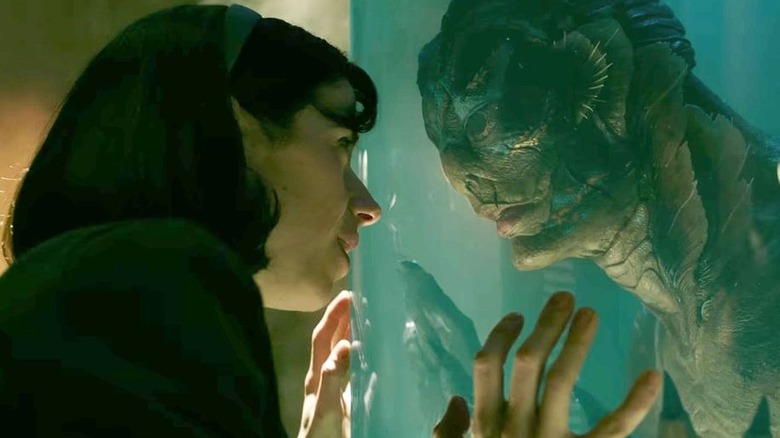
"The Shape of Water" is a love letter to cinematic history. It's gorgeously composed, splendidly acted (especially from central pair Sally Hawkins and Doug Jones), and very clearly a passion project of del Toro's. It's also the movie that won him his first best director Oscar -- in addition, of course, to winning best picture. Curiously enough, however, it lacks the same sense of urgency and tonal control del Toro previously excelled at. Make no mistake: "The Shape of Water" is exceptional, it's just not del Toro's greatest.
Sally Hawkins stars as Elisa Esposito, a mute cleaner at a government laboratory in Baltimore. There, she falls in love with an amphibian humanoid held captive in the facility. Much was made of the human/fish relationship (and yes, they have sex), but del Toro is talented enough to make it tender and profound, rather than off-putting. The core problem here is everything that surrounds the central love story. The tap dancing and romantic interludes transcend the conventional "government bad" narrative that makes up the rest.
While the bit players are good (Octavia Spencer earned another acting nom for her performance), it's a movie boxed in by the expectations del Toro set for himself. A masterpiece for anyone else, it simply feels great for del Toro. That's the shape of his career.
Crimson Peak
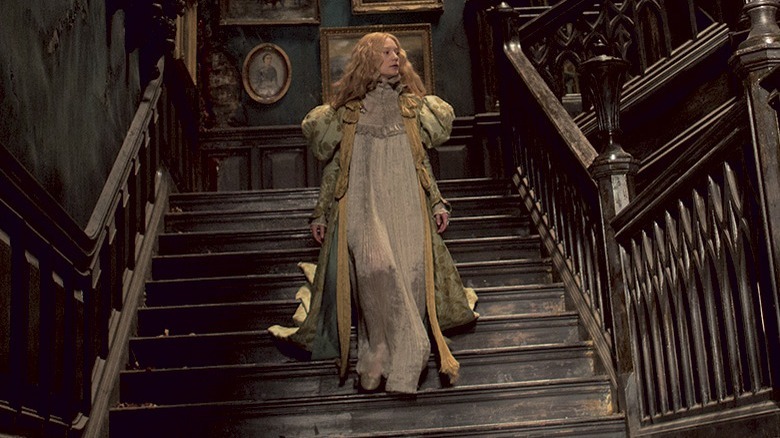
That "Crimson Peak" works as well as it does is a testament to del Toro's talents behind the camera. As a case study in textbook Gothicism, "Crimson Peak" doesn't do anything that hasn't been done decades before in the era of Hammer horror and Vincent Price; the digital ghosts are standouts, sure, but the erotic, incestuous subtext and sundry twists are well-worn tropes of the genre. There's not much new here, in other words ... but gothic gaslighting has never looked this good.
Mia Wasikowska stars as Edith Cushing, an aspiring author in Victorian England swiftly seduced by Tom Hiddleston's Thomas Sharpe. Warned since childhood to "beware of Crimson Peak," she is curiously dense when she arrives at Sharpe's Allerdale Hall, a mansion sinking into the red clay mine it sits atop. It is, of course, the Crimson Peak she'd been told to avoid, but it takes Edith a while (until the third act, in fact) to realize it.
Jessica Chastain joins the proceedings as Thomas' conspicuously evil sister, Lucille, while -- despite the many hauntings and strange occurrences at Allerdale -- Edith remains oddly calm. The late Thomas Sanders' sets are phenomenal, making "Crimson Peak" worth a watch for those alone. Allerdale Hall, for instance, is one of the genre's best settings, a decrepit yet ornate capsule of fading prosperity and shifting cultural ideals. The performances also elevate the story's familiar material, and del Toro is clearly having as much fantastical fun as he did with "Pan's Labyrinth." Audiences need not fear the wonders of "Crimson Peak."
Cronos
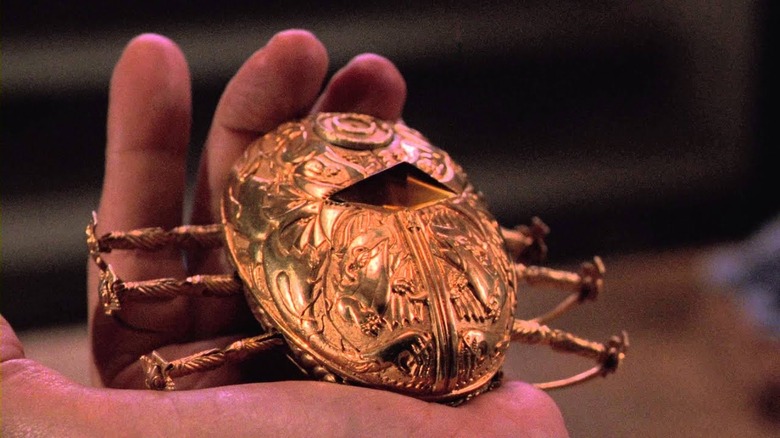
"Cronos" is Guillermo del Toro's directorial debut, released five years before his studio follow-up, "Mimic." As a calling card for his singular talents and flair for synthesizing the horrific and the fantastic, it's damn near perfect. The prologue follows an alchemist and the mechanism he developed to grant eternal life. When he dies centuries later (after his building collapses and he's impaled by debris), investigators discover vats of human blood nearby.
"Cronos" then jumps forward again, to 1996, this time following an antique dealer, Jesús Gris (Federico Luppi), who stumbles upon an ornate, mechanical scarab. When the scarab pierces his skin, Gris is injected with a mysterious serum. Shortly thereafter, he finds himself feeling healthier and more youthful than ever. Unfortunately, there's a side effect -- a taste for human blood.
As del Toro's official entry into ancient vampire mythos, "Cronos" shocks and awes in equal measure. It's icky, seductive, compelling, and rapturously beautiful to look at. It's easy to let this one get under your skin. Better still, the film operated like a vampire bite, turning viewers into instant Guillermo del Toro fans and announcing him as a talent to watch.
Pan's Labyrinth
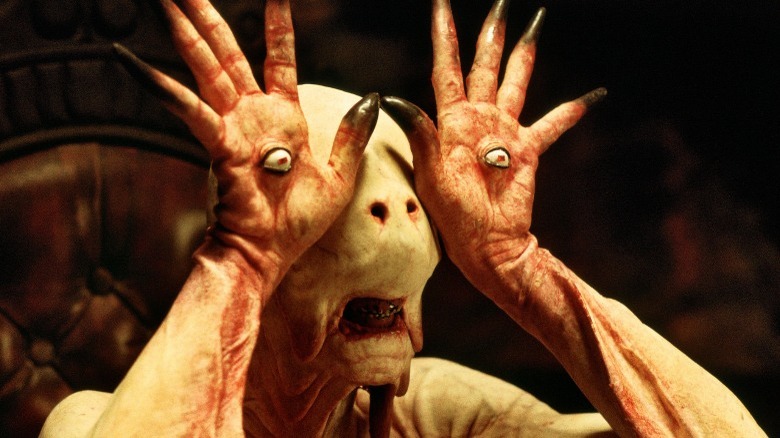
"Pan's Labyrinth" is responsible for Guillermo del Toro's contemporary clout. It allowed him to keep making movies for most of a decade, even as his movies financially underperformed ... despite retaining his glorious, unyielding vision. It garnered two Oscar nominations (best foreign-language film and best original screenplay) and was the impetus for some of Guillermo del Toro's best works. For some viewers, it remains the pinnacle of his career.
A dark fairy tale, "Pan's Labyrinth" follows 10-year-old Ofelia (Ivana Baquero, recently seen in "Black Friday") as she travels to her stepfather's (Sergi López) country estate in Francoist Spain. This would be Captain Vida, a brutal, monstrous man, who Ofelia eventually tries to escape from. While doing so, she meets a faun (Doug Jones) who suggests she is a long-missing princess. To return home, she must complete three distinct tasks. Groundbreaking in its synthesis of brutal war drama, fairy tale settings, and horror beats, "Pan's Labyrinth" remains unmatched, both in cinema writ large and among del Toro's own career.
Well, almost unmatched...
The Devil's Backbone
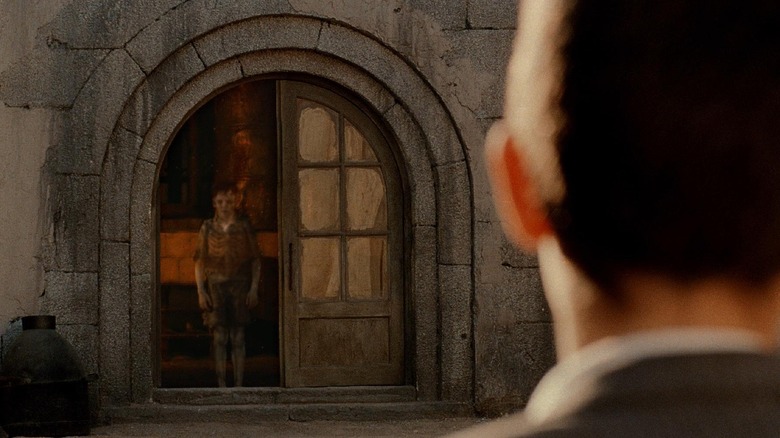
"Pan's Labyrinth" has been described as a spiritual successor to Guillermo del Toro's third feature, "The Devil's Backbone." Here, del Toro expertly crafts an enduring ghost story, one that conceptualizes ghosts quite differently than the genre had before. Tender, heartrending, brutal, and scary as hell, "The Devil's Backbone" is del Toro's preeminent work.
Oprhan Carlos (Fernando Tielve) arrives at a small home in remote Spain during the Spanish Civil War. Run by just a smattering of teachers and staff, the orphanage has endured several attacks from Francisco Franco's troops, and as a result, an inert bomb remains lodged in the grounds of the courtyard, a symbol for just how precarious life there truly is (There are also swirling rumors of a stash of gold hidden within). To make matters worse, Carlos routinely sees the ghost of a young boy named Santi, presumably murdered.
Simultaneously scary and soul-crushingly sad, "The Devil's Backbone" is as perfectly pitched as "The Orphanage," another del Toro-backed project. With that, he has two of this century's best -- if not the best -- ghost stories to his name. That's one hell of a reputation.
Read this next: The 25 Best Movie Robots Of All Time
The post Every Guillermo del Toro Movie Ranked appeared first on /Film.
0 Comments